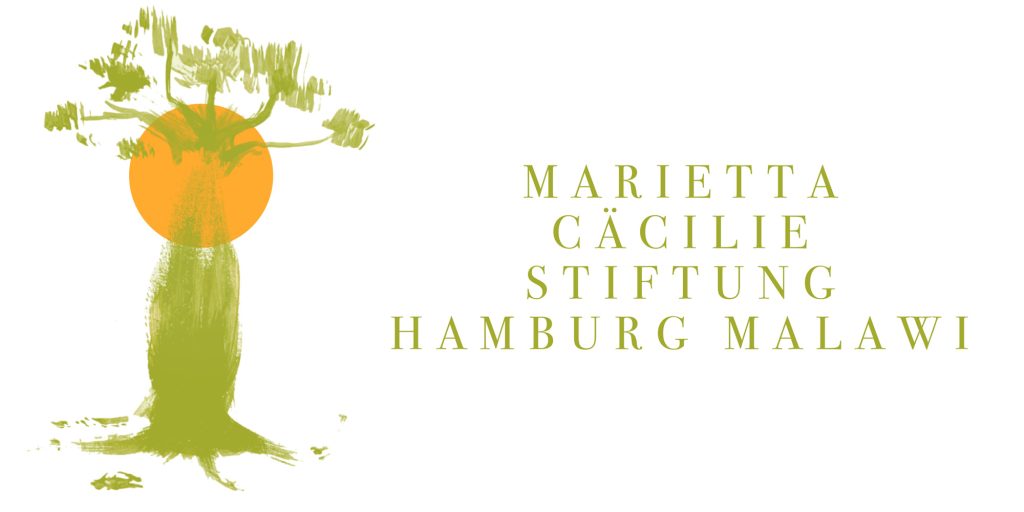Report by plastic surgeon Dr. Gie Vandehult on the medical mission to Mua Mission Hospital from July 5 to 10, 2023 at Mua Mission Hospital
The alarm clock rings every five minutes. Little Esina is fast asleep. To keep her asleep, she has to have 1 ml of Propofol injected into her vein every five minutes. If she doesn’t sleep, we can’t possibly surgically treat the rotten burn on her right upper arm.
We are in Mua, a small town about two hours’ drive east of the Malawian capital Lilongwe. Malawi is an East African country with no access to the sea, but is blessed with the beautiful Lake Malawi. The lake is 55 times larger than Lake Constance and is the lake with the most fish species in the world. Malawi is home to almost 21 million people in an area about a third the size of Germany. The East African country is one of the poorest in the world, with 70% of the population living below the absolute poverty line.
“We” are a Swedish-German team from southern Sweden and northern Germany, consisting of a pediatric anesthesiologist, a nurse anesthetist, a surgical nurse and a surgeon. We have all been to Africa several times before, but this is the first time we have worked in Malawi.
The hospital where we are allowed to work is called Mua Mission Hospital and is picturesquely situated in the mountains between Lilongwe and Lake Malawi. Father Isaac runs the hospital with great organizational talent and dedication, which is not easy as the hospital with over 100 beds currently has to manage without a surgeon. Caesarean sections are performed by the nursing officers. These are nurses who have received special training and perform both anesthesia and surgical procedures. He knows what he is doing, and he has to, with around 200-250 caesarean sections a year.
The hospital’s homepage represents a vision that still needs to be achieved. Nevertheless, the first steps have been taken. Mrs. Enke Cäcilie Johansson, who had already been on site in Mua to build a school and accompanied us this time, established contact with the facility.
Father Isaac had let the surrounding churches know that we were coming and had also had a few flyers printed with before and after pictures of cleft lips, scars after burns and soft tissue skin tumors.
On the first day, we saw over 50 patients and put 35 patients on the surgery plan. Unfortunately, we could not do justice to all of them and had to put many on a waiting list. Every single person we couldn’t take into account because of a lack of time or because we didn’t have the right knowledge leaves a wound in our hearts. We got to work quickly. As the hospital has two operating theaters, we were able to use one of the two rooms.
We had brought all the material we needed for anaesthetizing and operating with us from Sweden and Germany. The only things we needed from the hospital were electricity and oxygen.
As this operation was “only” a “test balloon” to find out whether the location was suitable for further operations, we had expected to perform around 25 operations before we left. In view of the large number of operations, we had to use our equipment sparingly and at the same time maintain proper hygiene. It is not the case that just because a colleague puts on sterile gloves, everything around him suddenly becomes sterile.
Our instruments were temporarily sterilized and there was at least some hope that the frozen pizza from the oven would not appear any more sterile than the instruments from the autoclave.
During the intensive days of surgery, we were able to operate on a total of 37 patients with the help of our interested, ambitious and very capable Malawian staff. We performed 19 operations under general anesthesia and 18 operations under local anesthesia. Among them were 5 children under the age of 10 with scars from burns, cleft palates and hexadactylias. The adults needed our help mainly because of hand surgery problems and soft tissue tumors, especially on the head. They included everything from salivary gland tumors to grotesquely large atheromas and lipomas.
There are always a few patients in particular who stick in my memory. The burns and contractures on 5-year-old Esina’s elbow were successfully treated. The arm was splinted with a repurposed, split 0.5 l water bottle and looks very good today, two weeks after the operation. The graft has set and she can move her arm completely again.
The aftercare in Mua is excellent. We regularly receive photos and progress reports via WhatsApp. The 50-year-old man with a tumor on his right lower jaw (most likely a pleomorphic adenoma), which has been growing slowly for 14 years and is now the size of a tennis ball, had tears in his eyes when he saw his face in the cell phone photo. He asked if we were a gift from God. We can’t judge that, but what is certain is that we are an Interplast team who have thoroughly enjoyed working in this hospital with its wonderful people and certainly want to continue.
The team
Dr. Monica Zimmert, anaesthetist, Dr. Gie Vandehult, surgeon, Christiane Mallee, anaesthetic nurse, Jane Lienau, surgical nurse
Our thanks go above all to Interplast-Germany, who financed this operation, as well as the Ostsee-Praxis, Bad Schwartau and the Art Clinic, Gothenburg, who supported us with materials. A very special thank you to our families who support our missions and to our patients who make our work possible with their donations.
Dr. Gie Vandehult









